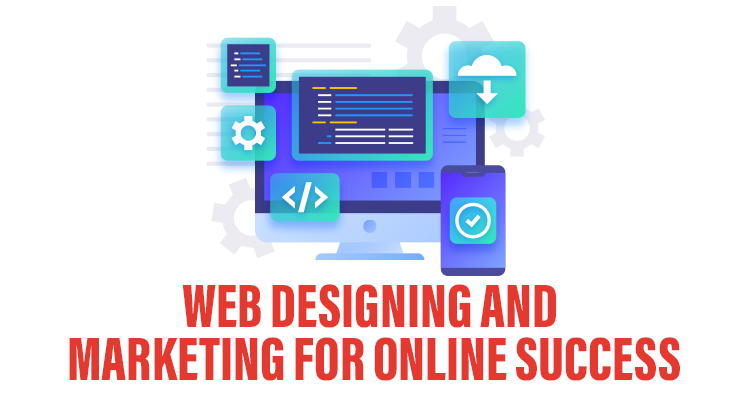
Introduction:
A strong online presence is required for organizations to thrive in today’s digital economy. Attracting and maintaining clients requires effective site design and marketing methods. Creating a user-friendly platform, optimizing navigation, and improving visual appeal are all aspects of web design. A well-coordinated web marketing strategy is critical for growing traffic, improving conversions, and establishing an online presence. Understanding and applying fundamental web design components such as responsive design, intuitive navigation, and visual appeal can help to build a solid foundation for online success. In the fast-paced world of web design and marketing, being ahead of the curve is critical for attaining unparalleled growth and developing a captivated and converted online presence.
Web Design Fundamentals:
A well-rounded and effective website requires several essential elements to enhance user experience and increase conversion rates. These elements include a clear Call-to-Action (CTA), fast loading speed, well-organized content, consistent branding, accessibility, whitespace and layout, and social proof and testimonials. A clear CTA guides visitors towards desired actions, while a fast loading speed ensures efficient information access and improves search engine rankings. The content organization helps break up information, while consistent branding reinforces brand identity and creates a cohesive visual experience. Accessibility ensures a wide range of users can access the website, including those with disabilities. Whitespace and layout create visual breathing room, improve readability, and guide users’ attention to key areas. Social proof and testimonials build trust and credibility, encouraging potential customers to take action. By considering and implementing these essential elements in web design, a visually appealing, user-friendly, and conversion-oriented website can be created.
User-Centred methodology:
User research and testing are essential steps in the web design process to create a user-centred website that meets the needs and expectations of your target audience. Gathering data on demographics, interests, and behaviours helps inform design decisions. User personas are fictional representations of different user types, emphasizing their goals, motivations, and challenges. Developing user personas helps tailor content, features, and navigation to effectively engage different user segments. User testing helps identify usability issues, navigation challenges, and areas for improvement. Iterative design updates are based on these insights, ensuring that the website evolves and improves over time, aligning with user preferences and delivering a seamless experience. By combining user research, personas, user testing, and iterative design updates, you can create a user-centred website that effectively addresses audience needs, delivers value, and drives engagement and conversions. Prioritizing user experience through research and testing leads to a website that resonates with your target audience and contributes to the success of your online presence.
Most effective online Marketing Strategies:
A well-designed website is crucial for establishing an online presence, but effective web marketing strategies are essential for driving traffic, increasing conversions, and achieving success. SEO involves optimizing content, structure, and meta tags to improve visibility in search engine results. Content marketing involves creating engaging content that aligns with the target audience’s interests, attracting visitors and building a loyal customer base. Social media marketing leverages platforms to engage with the audience, promote the brand, and drive traffic to the website. Continuously monitoring marketing efforts, experimenting with different approaches, and adapting strategies based on changing needs and preferences are essential for long-term success.
Conclusion:
Web designing and marketing are intertwined for online success. A visually appealing, user-centric design captures visitors’ attention, while effective marketing strategies like intuitive navigation and compelling visuals drive traffic, increase conversions, and maximize website potential. Combining well-designed visuals with strategic tactics attracts the right audience, communicates brand messages effectively, and guides visitors towards desired actions. Continuously monitoring performance, analyzing user behaviour, and staying updated with design trends ensures a visually appealing, functional, and aligned website. Adaptability is crucial in the competitive digital landscape.
